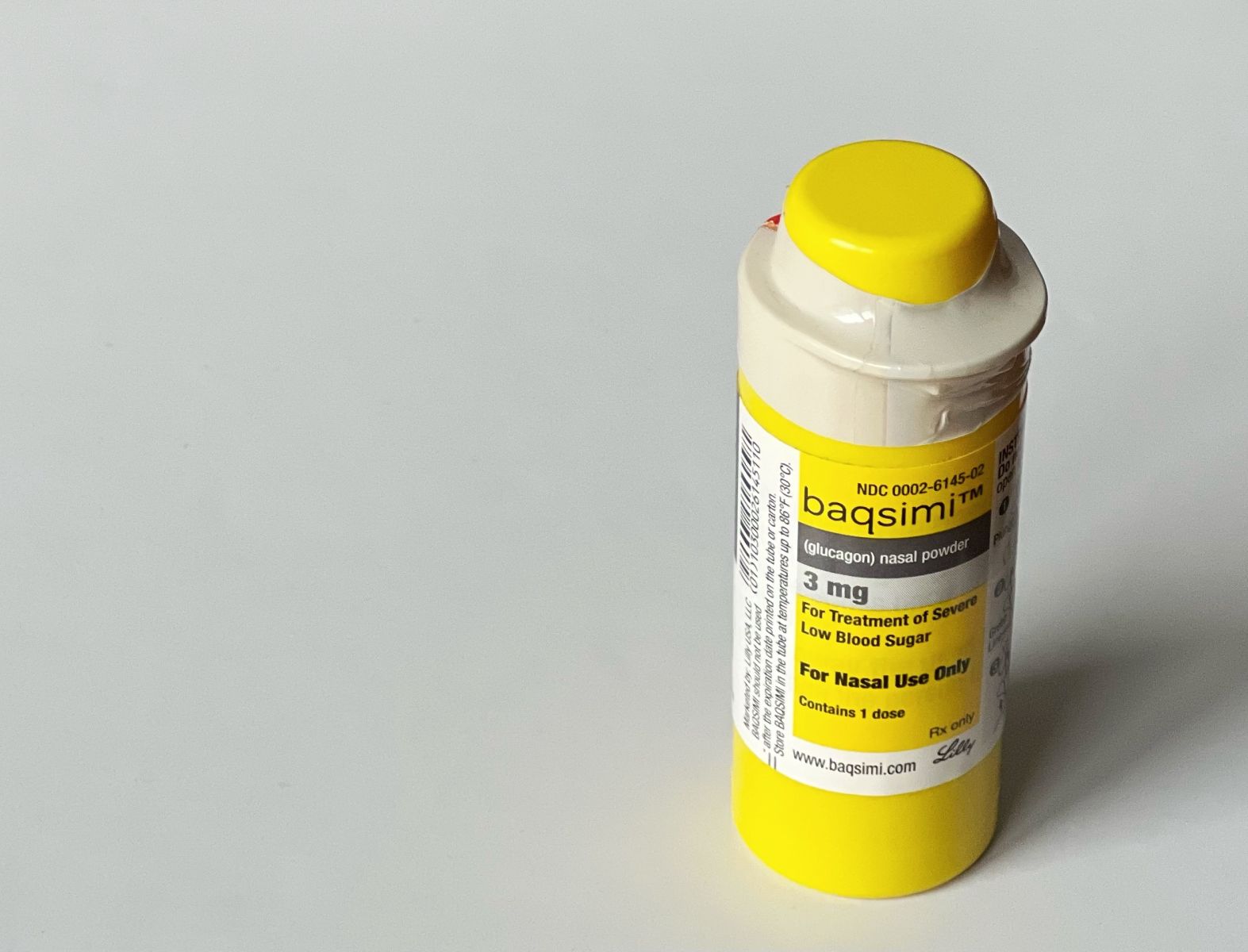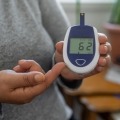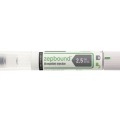Glucagon: Everything You Need To Know
By April Hopcroft
.jpg) Glucagon is used to treat dangerously low blood sugar. Newer ready-to-use glucagon options, including autoinjectors and nasal glucagon, offer more convenience for people with diabetes.
Glucagon is used to treat dangerously low blood sugar. Newer ready-to-use glucagon options, including autoinjectors and nasal glucagon, offer more convenience for people with diabetes.
Glucagon is a hormone made by alpha cells in the pancreas that increases blood glucose. Glucagon raises blood sugar by telling the liver to release stored sugar into the bloodstream and make new sugar.
Glucagon is used to treat severe hypoglycemia, or dangerously low blood sugar.
Who uses glucagon?
People with diabetes use glucagon to treat severe hypoglycemia. Glucagon is produced naturally in the body when blood sugars drop, while synthetic glucagon is given by injection to raise blood sugars.
Hypoglycemia varies in severity and can occur for a variety of reasons, such as doing too much exercise, skipping a meal, or giving yourself too much insulin.
Mild hypoglycemia (below 70 mg/dL) can often be treated by eating carbohydrates. In cases of severe hypoglycemia (below 54 mg/dL), a person may be unable or unwilling to swallow food or drinks to treat the low on their own. Glucagon can be administered in an emergency situation (when someone is unable or unwilling to consume carbohydrates, unresponsive, having a seizure, or in a coma) to quickly raise blood glucose levels.
The American Diabetes Association (ADA’s) 2024 Standards of Care recommends that all people taking insulin or who are at high risk for hypoglycemia be prescribed glucagon, preferably ready-to-use glucagon products like Baqsimi, Gvoke, and Zegalogue. The Standards of Care also recommend that family members, caregivers, school employees and anyone else who cares for people with diabetes know where glucagon is located and how to use it.
People with diabetes who use insulin or sulfonylureas are at the greatest risk of severe hypoglycemia. Ask your healthcare provider for a prescription if you do not already have one for glucagon.
Research shows that glucagon is underprescribed and underused among both people with type 1 and type 2 diabetes, so the latest ADA guidelines mark an important step towards greater access to glucagon.
What’s the difference between glucagon and insulin?
Insulin and glucagon are both hormones produced by the pancreas that work together to regulate blood sugar. When blood sugar is too high, the beta cells of the pancreas release insulin to lower blood sugar. Meanwhile, when blood sugar is too low, the alpha cells of the pancreas release glucagon to raise low blood sugar levels.
Ready-to-use glucagon
Until 2019, traditional glucagon emergency kits were used to treat severe hypoglycemia. These kits required a multi-step reconstitution (mixing) process to turn powdered glucagon into a liquid that could be injected.
In the stress of a severe hypoglycemic event, caregivers may become overwhelmed by the different steps of the preparation process. As a result, they may not be able to deliver the rescue glucagon correctly. These challenges contribute to the underuse of glucagon.
Ready-to-use emergency glucagons, or next-generation glucagons, were launched in 2019 with the approval of Gvoke HypoPen. These newer therapies offer greater convenience for people with diabetes and their caregivers, because they don’t require a complicated reconstitution process. Autoinjectors and nasal glucagon provide good options for children and others who may be afraid of needles. Lilly discontinued its traditional glucagon emergency kit at the end of 2022, and Novo Nordisk is permanently discontinuing its traditional glucagon emergency kit in the US on July 1, 2024.
What types of ready-to-use glucagon are available?
-
Autoinjectors: These glucagons are ready to inject (like an EpiPen for allergies) and are administered by a caregiver or trained individual, such as a family member or friend. Gvoke HypoPen is approved for people with diabetes ages 2 and up. Gvoke is also available as a pre-filled syringe, and GvokeKit offers a premixed ready-to-use vial and syringe. Zegalogue is approved for people with diabetes ages 6 and up. It is also available as a pre-filled syringe.
-
Nasal glucagon: This is a needle-free glucagon option. Since it does not require inhalation, it can be successfully administered by another person if the receiver is unconscious. Baqsimi is approved for people with diabetes ages 4 and up. It is currently the only nasal glucagon option.
What are the benefits of ready-to-use glucagon?
Ready-to-use glucagon is a quick way to treat severe hypoglycemia – and a better alternative to calling an ambulance.
Current research with all ready to use glucagon options has shown that approximately 99% of people recovered and returned to regular blood sugar levels within just 15 minutes for all ready-to-use glucagon options. For comparison, the recovery time for traditional glucagon emergency kits can be up to 30-45 minutes.
Ready-to-use glucagons are easy for caregivers, family members, and other community members to use so they can help in an emergency. These newer forms are also smaller and more discreet than the bright orange traditional glucagon kits. This means you can easily stash a backup at school, work, or carry it with you out and about as you might do with an EpiPen.
What are the drawbacks of glucagon?
Glucagon can cause side effects such as:
-
Nausea
-
Vomiting
-
Diarrhea
-
Hives
-
Headache
-
Injection site pain
-
Fast heartbeat
Taking nasal glucagon may also cause upper respiratory tract irritation. In rare instances, people who are allergic to the glucagon formulation or any of the other ingredients in ready-to-use glucagon may experience an allergic reaction. If you experience symptoms of a severe allergic reaction – rash, difficulty breathing, or low blood pressure – call your healthcare provider or get medical help immediately.
Another drawback is glucagon can be expensive, especially considering that it’s not used often. However, knowing that you have treatment readily available in case of an emergency is priceless. Many companies offer patient assistance programs to reduce the cost of glucagons:
-
With Novo Nordisk’s patient assistance program, eligible users who have a prescription for Zegalogue can pay as little as $35 (for those on commercial insurance) or $99 (for those who are uninsured or paying cash), for each auto-injector device or pre-filled syringe.
-
Eligible Baqsimi users with commercial insurance coverage for their prescription can pay as little as $25 for up to two devices through Amphastar’s patient assistance program.
-
Similarly, eligible Gvoke users with commercial insurance and a valid prescription can pay as little as $25 for the HypoPen with Xeris’ copay card.
Who should not use glucagon?
There are certain groups of people who should avoid taking glucagon, including:
-
Those with a tumor in their pancreas or adrenal gland.
-
People who are allergic to any of the ingredients in ready-to-use glucagons.
-
People who are pregnant, plan to become pregnant, or are breastfeeding should also consult their healthcare provider to discuss using glucagon.
What’s next for glucagon?
Researchers are investigating microdosing, or using mini-doses of glucagon, to prevent hypoglycemia caused by exercise.
A small study found that using mini-dose glucagon, with or without reducing basal insulin delivery rate, can help reduce exercise-induced hypoglycemia in adults with type 1 diabetes. Although the study did not show differences in time in range, level 1 hypoglycemia (less than 70 mg/dL) was lower in people using mini-dose glucagon compared to those in the placebo group.
Glucagon is also being studied for use in automated insulin delivery (AID) systems. Beta Bionics, the company that makes the iLet AID system, is developing an AID system that delivers both insulin and glucagon to more precisely manage blood sugar.
This “dual hormone” system should eliminate the need to use carbs to manage low blood sugar – and early data has been promising. In a small study of teens, an investigational dual-hormone system led to similar time in range compared to an insulin-only system, with the exception of nighttime and exercise.
While more research is needed to fully understand these investigational uses, including the safety and efficacy of microdosing, and dual-hormone AID systems, it’s certainly an exciting time as researchers begin to better understand the multiple hormones involved in glycemic control.
Learn more about hypoglycemia and glucagon here:
Photo credit: Susannah Chen








